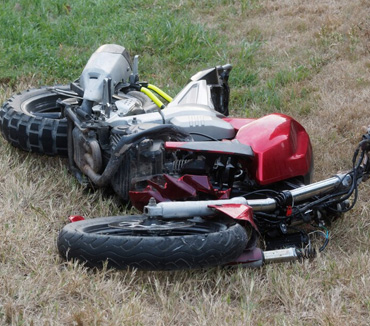How Motor Vehicle Accidents Can Lead to Traumatic Brain Injuries
The brain is not securely fastened to the inside of the skull. When the head is bounced around in a motor vehicle accident the brain will not just sit still. Instead, it will smash into the walls of the skull, causing bruising and bleeding at the part of the brain near the point of impact. When the skull strikes the steering wheel, window or other object, the brain continues to move even after the head has stopped. The most affected will likely be the frontal lobe (emotional control system) and temporal lobe (selective attention system). After hitting the front of the skull, the brain can bounce back and slam against the back of the skull. This can sometimes damage the occipital lobe (responsible for visual processing).
A traumatic brain injury (TBI) can range range from mild to severe and can occur when the head is stricken, suddenly jerked, or penetrated by a foreign object. When a brain injury is mild, loss of full conscious awareness will persist for a short amount of time. When a brain injury is severe, there will be memory loss or extended unconsciousness for a prolonged period of time after the injury was inflicted.
Different types of brain injuries include:
Whiplash
When you think of whiplash, you may be thinking of injuries to your neck and back, but whiplash can be very damaging for the brain as well. When the head is suddenly twisted with the deceleration of an automobile crash, the brain will move around as well. Severe whiplash can potentially put the victim in a coma. With high speed crashes, pressure waves will move through the brain at excessively high speeds.
Loss of Consciousness
If you have experienced a loss of consciousness, the severity can span from being slightly dazed to being in a coma for multiple days. The longer the period of unconsciousness, the more severe the brain damage will be and the more likely permanent damage to the brain can occur.
Concussion
A concussion is a mild head injury that can cause a brief loss of consciousness, but does not always manifest in unconsciousness. A concussion does not typically lead to permanent brain injury.
Contusion
Simply explained, a brain contusion is a bruise of the brain tissue. Similar to bruises that occur on other parts of the body, a brain contusion is caused by small blood vessel leaks. Since they involve structural brain damage, contusions are more serious than concussions.
Subdural Hematoma
As a result of the direct trauma, secondary injuries can occur in the brain. A subdural hematoma is a buildup of blood on the surface of the brain. The blood builds up in a space between the protective layers that surround your brain.
Edema
Swelling, also called edema, is the body’s response to many types of injury. Your brain can also swell as a result of injury, such as that suffered in a car accident. Brain swelling, though, can quickly cause serious problems, including death. It is also usually more difficult to treat.
There are simple strategies that can be implemented which will greatly reduce the chance of experiencing the horrible realities of a traumatic brain injury first hand. Be sure to buckle up every time when riding or driving in a motor vehicle to help prevent the body from flying into the window or steering wheel in the event of an accident. Have a child safety seat available for any children who may travel in the vehicle. If the child does do not reach the height and weight requirements, a seat belt will be of no proper benefit. The inertia that has built up can be fatal when the child suddenly hits the back of the driver’s seat.
Never drive while under the influence of any type of drug or alcohol, whether illegal or legal. These substances will greatly reduce your awareness and reaction time. When riding a motorcycle, ATV, or scooter, always wear a helmet. By practicing these few simple strategies traumatic brain injury can be greatly reduced or avoided all together.
If you or a loved one has suffered a brain injury in a motor vehicle accident and have questions about seeking legal action, call us now at 1-877-241-9554 to learn more about your options. A free consultation is just a phone call away.
Request A
Free Consultation
Fields Marked With An ” *” Are Required










